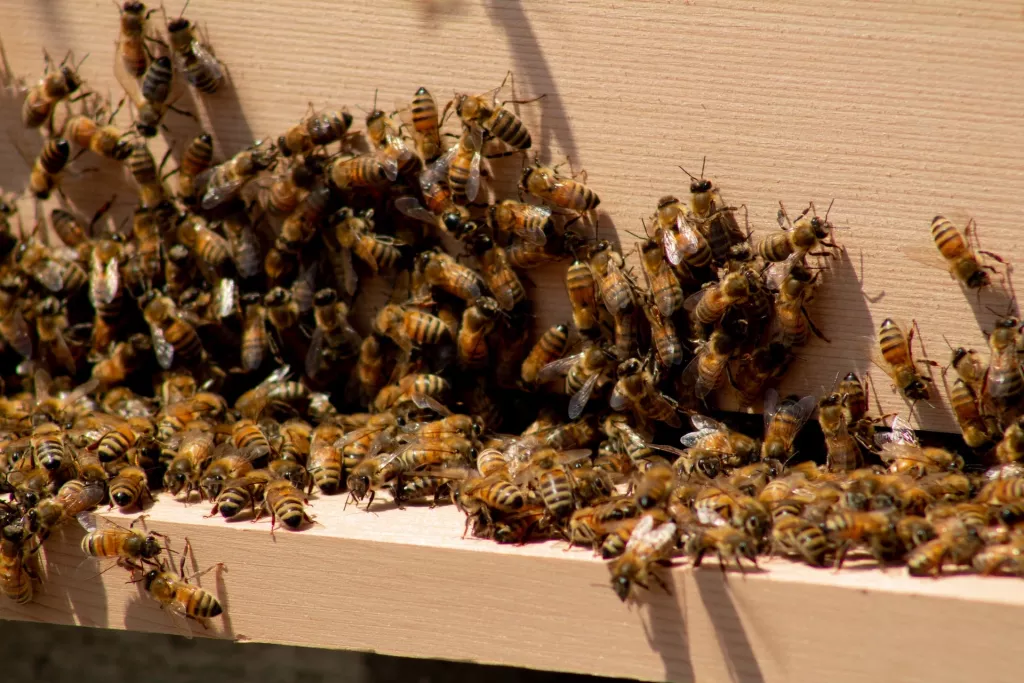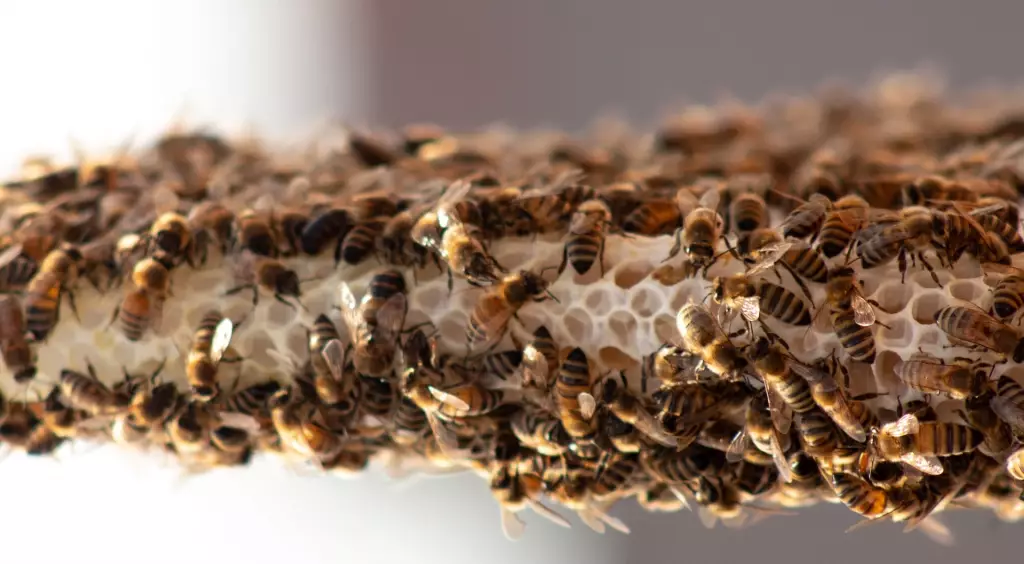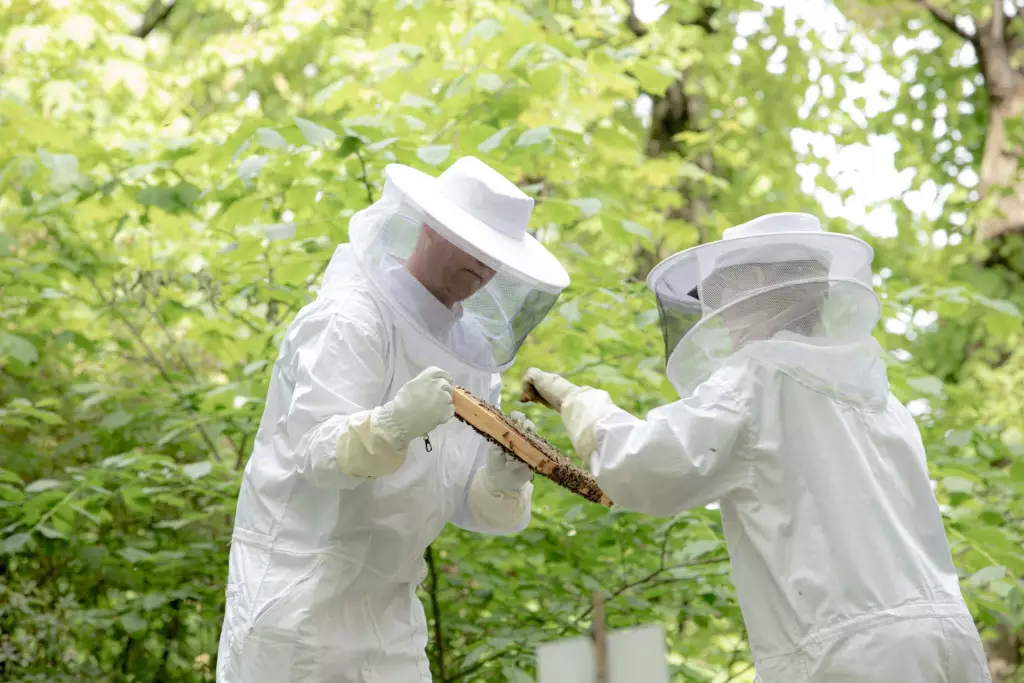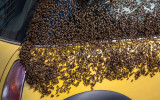3 Reasons Why Bees Swarm in the Fall & How To Avoid It
Bee colonies are preparing to swarm as the days become shorter and the temperatures drop. Honeybees have outgrown their nesting area since they last separated in the spring, and it is time to relocate once more. Why do bees swarm in the fall? How do we avoid it?
Bees swarm in the fall because of overcrowding, varroa mite and small hive beetle infestations, and queen issues. To avoid the occurrence of these three reasons, beekeepers need to give the bees more space, ensure proper hive ventilation, and give the hive a new queen.
In the fall, you suddenly notice your hive swarm. A colony swarm that emerges in the late season has a lesser chance of enduring the winter. Let’s find out what you should do when you spot a small swarm at this time of year.
Summary
- Bee swarms in the fall are not uncommon, and they can be avoided through swarm prevention practices.
- You can rescue the fall swarm, but don't put at risk the bees that can overwinter in order to save those that most likely can't.
- Swarms are most likely harmless, so don't panic. They just need to transfer to a safer location.

On this page:
Bees Swarming In The Fall
A bee swarm is not a pleasant sight, especially in the fall, but it’s not uncommon. It can result in less honey being harvested or put the mother colony's health in peril.
The late-season bee swarm is typically not a bonus that will most likely produce a healthy beehive. In fact, depending on the area, they might not make it through the winter.
If the fall swarm originated from one of your own hives, then that colony is also in jeopardy. This hive must rear a new queen from the queen cells that were left behind.
Swarming colonies in the fall are a mystery to bee researchers. These swarms are different from the reproductive swarms that occur in the early part of the season, and they are often much smaller. Possible causes of fall swarms include:
Overcrowding
A colony can and will swarm during the fall due to congestion in the hive under the correct circumstances, although this is a rare event. The bees crawling out and hanging in a cluster around the entrance are a surefire sign of overcrowding.

By removing the lid and peeking under it, you may determine whether a colony is overcrowded by looking inside it. If you look beneath the lid, you'll see a good number of idle bees. The fact that they're in the lid is a sure sign that the population in this hive is fairly large. It's a sign that the colony might swarm.
Pest infestations
Colonies with heavy insect infestations of varroa mites or hive beetles frequently swarm or, more likely, abscond. This could be a desperate attempt to jump ship and try to find a better place.
Varroa mites carry a variety of viruses that make bees sick, and they frequently weaken honey bee colonies and make them more vulnerable to disease. Colonies with these mite infestations often have developmental anomalies as well, such as wing malformations.
The small hive beetle's larvae are what cause the most of the damage to hives. As they gorge on honey and pollen, these feeders consume entire combs. Combs and caps are destroyed in their path, and the honey ferments and turns discolored due to the feces of the larvae.
Bees are trying to requeen
The swarm cells are built along the bottom of the frames. The colony forms a swarm cell when their population is abundant and the colony is healthy enough to reproduce.
Bees nearly always produce numerous queen cells. If you notice many of these cells grouped together or more than 10 in one hive, don't be frightened. In order to safeguard the survival of their colony, the bees take this action as a sort of insurance policy.
How To Avoid Bees Swarming In The Fall
Although swarms are a striking sight and a completely normal occurrence for the bees, they are not good news for you. A colony will struggle to rebuild its numbers and productivity if it loses 50% of both its honey production and its population.
Additionally, it implies that the bees would struggle more to survive the freezing winter months.
Swarms that are moving are most likely not hostile. Rather, they are simply trying to get from one place to another. Before swarming, bees gorge on honey, which makes them especially docile. There is no need to panic if you have a bee allergy, but you should exercise caution.

Swarming bees means that our bee population is thriving. It is occurring to establish new colonies. However, here are ways on how to avoid bee swarms late in the season.
Avoid overcrowding
Overcrowding is one of the main causes for a colony to swarm, so anticipate your bees' needs and provide them with more space before they need it.
You can opt to split the colony to avoid its overpopulation in the fall. The period from early July to early August after your honey extraction is the ideal time to make fall splits.
Making splits in the fall after extraction will ensure that your honey yield is unaffected, especially if your area does not get a significant nectar flow in the fall. It may even be possible to make fall splits throughout the summer, depending on where you live.
Ensure proper ventilation
Check to see if the ventilation hole at the front of your inner cover, if it has one, is open.
Attach a short wooden Popsicle stick to each of the inside cover's four corners with glue. This improves air movement into and out of the hive by forming a tiny gap between the inner cover and the hive.
In your upper deep and all of your honey supers, drill holes the size of a wine cork. By doing this, you give the bees more entrances as well as increased ventilation.
Requeen
Requeening the hive depends on the beekeeper's management method. While some wait for the hives to naturally requeen themselves, others requeen each spring.
Nevertheless, because they are still establishing themselves in the hive, new queens are less likely to swarm. Swarming is much less common in colonies with young queens.
You can regularly replace queens by buying new ones, raising your own, or manipulating the colony during swarm control, such as by reuniting a vertical split.
How To Get a Late Fall Swarm Through The Winter
Bee swarms in late August and early September have a low chance of surviving. Perhaps the colony wants to create a new queen or is just trying to reduce the number of bees in their hive.
You can attempt to put them in nuc boxes. If you try to feed them or give them honey frames from another hive, seal up all the entrances and cover the hive with a wire mesh or ventilated cover to prevent robbery.
If you have a queenless swarm or a swarm led by a virgin, your best option would be to unite it with one of your other colonies.
If you have a laying queen in the swarm, check your strong colonies that have multiple frames of brood. You can try to get one frame and transfer it to this colony.

What To Do With A Fall Swarm
There is still some value in trapping the small swarm, even if the beekeeper does not plan to overwinter it.
If a queen is present, you can put the fall swarm in a nuc box. The queen and even the bees she brought along with her might be needed in another weak and queenless colony. In this method, even if the swarm doesn't split off into a hive, you can try to save the bees within it.
If a beekeeper attempts to save these small swarms, he or she must be ready to provide the bees with a lot of food. It may also be necessary to unite smaller colonies before the weather turns chilly.
Get the bees out of the tree first. Put them in a bucket on a pole, and nudge the branch to knock many of the bees into the bucket. Then swiftly pour these bees into a hive box with five drawn comb frames.
On top of the hive is a temporary feeder jar that contains some sugar water. After the majority of the swarm has entered, the entrance is reduced to a narrow opening, about 1 inch wide.
